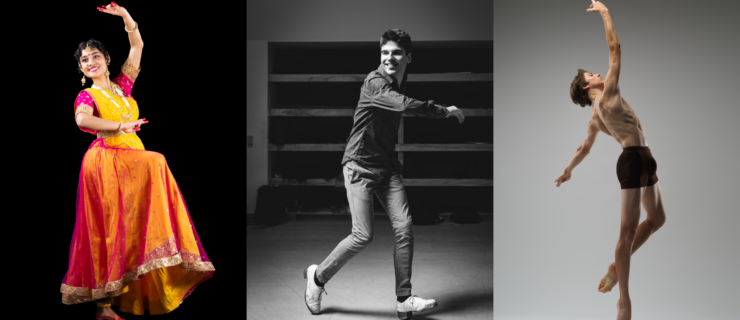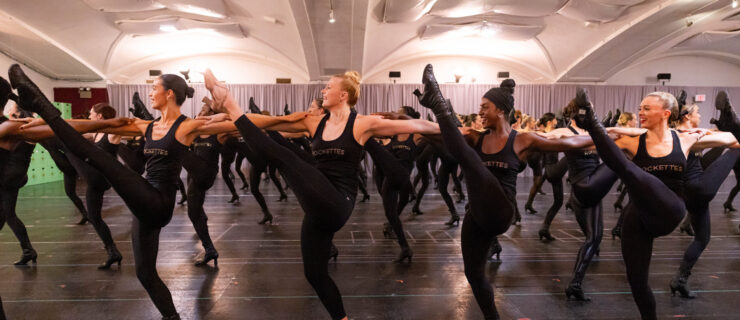Improve Your Improv
Improvisation—generating spontaneous movement in the moment—can be a daunting and agonizing prospect for dancers who are used to being told precisely what to perform. What if you can’t think of anything cool to do and end up just standing there? What if you mess up? Will people laugh at your movement?
It may be scary at first, but improv is a tool that can alter your relationship to dance completely. You’ll begin to identify your natural movement patterns and become more comfortable moving in unusual ways—and maybe even come up with ideas for choreography. Whether you’ve never done improv in your life or loved it for years, here are some ideas to help you hone your craft.
Improv’s Practical Side
Improv devotees love the practice because it’s fun, unpredictable and challenging. But even if the idea of creating movement on the spot makes you uncomfortable, mastering the craft can take your dancing—in any genre—to new levels. “You’re not worrying about the sequence of steps, so you can explore who you really are as a mover,” says Brenda Divelbliss, who teaches modern and choreography at Cambridge Rindge & Latin High School in Cambridge, MA, and has taught at Bates Dance Festival and Harvard University’s dance program. Improv can help you understand what types of movement resonate with you and what interests you artistically—which can help you decide which professional companies you’re best suited for.
For choreographers, improv can be an efficient use of time when you’re looking to create new material. Additionally, you might discover certain “signature moves” that you will want to repeat—you can embrace these steps as part of your movement style, but be aware of overusing them. And even if you’re not a choreographer, you may be asked to contribute to the choreographic process. “Many choreographers in both modern and ballet companies look to their dancers for new ideas,” says Divelbliss. You could be given a few steps or a complete phrase and be asked to manipulate the movement, pushing the dance in a new and personal direction. Taking an improv class will give you the tools to do this.
5 Tools To Try
-
Start with a structure.
In an improv class, you’re likely to be assigned a topic to explore, such as weight, space, a particular movement quality (fluid or airy) or even an emotion. To practice, go into the studio and give yourself such an assignment. You can use music or create your dance in silence. Move with your structure in mind, and if you find yourself drifting away from your original idea, return to it. -
Watch improv.
Your teachers may divide you into groups and have you watch each other improvise. Observing someone else’s practice will help you gain a keener eye for the things that make an improv interesting. You may also pick up new ways of moving by watching others. Take turns improvising with a group of friends, maybe even videotaping your movement. Watch each other or the tape and make notes about what worked and what didn’t, and have friends give you constructive feedback. -
Push for contrast in your tempo, levels and other aspects of the movement you create.
Teachers and choreographers will give you notes as you move, but be aware of your tendencies when you’re practicing on your own. Developing contrast—and trying things that are new or unfamiliar to you—will make your dancing stronger and your choreography more engaging. -
Stay in the moment and the movement.
If you’re given a set amount of time to improvise in class, stay focused the whole time. “Don’t judge or self-edit as you go through these explorations,” says Divelbliss. Give the unexpected room to emerge by allowing each movement to evolve from the one before and lead naturally into the one that follows. Shadowing and mirroring can be a great way to create movement when working with a partner or a group, but don’t spend time copying your neighbors—even if it’s embarrassing at first, you’ll learn more from taking risks on your own. -
Layer an improvisation by creating your own experience
, even if you’re working on an assigned structure that a teacher or fellow dancer has given you. For instance, if the assignment is to work on timing and direction in space, but you know you have a problem transitioning through level changes, try exploring different levels as you work.
Keys to Success
The two most important components of a successful improv are staying true to the structure you set up, and staying open to how the dance can evolve. Within your chosen or assigned framework, allow the unexpected shape or movement to emerge from your creative center. You might just find yourself moving in a whole new way.
Try It!
Create an improv around one of these prompts—or combine several ideas for an extra challenge. Remember, you’re just moving in response to these words, so there’s no wrong answer!
Movement qualities:
- Airy
- Fluid
- Heavy
- Sharp
Time and space:
- Direction
- Level
- Tempo
- Weight shift
Body parts:
- Fingers
- Head
- Knees
- Pelvis



